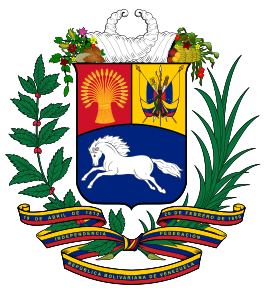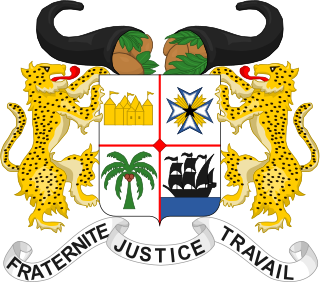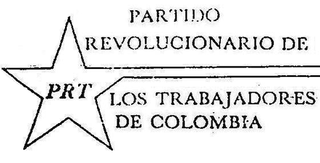
Elections in Venezuela are held at a national level for the President of Venezuela as head of state and head of government, and for a unicameral legislature. The President of Venezuela is elected for a six-year term by direct election plurality voting, and is eligible for re-election. The National Assembly (Asamblea Nacional) has 165 members (diputados), elected for five-year terms using a mixed member majoritarian system. Elections also take place at state level and local level.

Elections in Benin take place within the framework of a multi-party democracy and a presidential system. Both the President and the National Assembly are directly elected by voters, with elections organised by the Autonomous National Electoral Commission (CENA).

Elections in Niger take place within the framework of a semi-presidential system. The President and National Assembly are elected by the public, with elections organised by the Independent National Electoral Commission (CENI).

Elections in Rwanda take place within the framework of a multi-party democracy and a presidential system. The President and majority of members of the Chamber of Deputies are directly elected, whilst the Senate is indirectly elected and partly appointed.

Elections in Zambia take place within the framework of a multi-party democracy and a presidential system. The President and National Assembly are simultaneously elected for five-year terms.

A constitutional referendum was held in France on 5 May 1946. Voters were asked whether they approved of a new draft Constitution proposed by the Constituent Assembly elected in 1945.

A constitutional referendum was held in Chile on 30 June 1989. The proposed changes to the constitution were approved by 91% of voters.

Presidential elections were held in Colombia on 27 May 1990. In an election tarnished by violence, the result was a victory for César Gaviria of the Liberal Party, who received 48.2% of the vote.

A constitutional referendum was held in Guyana on 10 July 1978. The proposed change to Article 73 of the constitution would abolish the need for referendums to change the entrenched provisions of the constitution and instead allow them to be changed by a two-thirds majority in parliament. It would also result in the postponement of the elections scheduled for later in the year, and instead the parliament elected in 1973 would be declared a Constituent Assembly.

A constitutional referendum was held in Suriname on 30 September 1987. Voters were asked to approve the country's new constitution. It provided for a 51-seat unicameral National Assembly elected by proportional representation, a President elected by the National Assembly. Over 96% voted in favour, with a turnout of 62.7%.

A constitutional referendum was held in Uruguay on 19 April 1934, alongside parliamentary elections. The new constitution was approved by 95.75% of voters.

A double referendum on constitutional reform was held in Uruguay on 27 March 1938. Both sets of reforms were approved by voters.

A constitutional referendum was held in Uruguay on 29 November 1942, alongside general elections. The new constitution was approved by 77.17% of voters.

A constitutional referendum was held in the Federated States of Micronesia on 27 August 2002. Voters were asked whether they approved of 14 separate amendments to the country's constitution. To be approved, the proposal required at least 75% of voters in at least three of the four states to vote in favour. Ultimately all 14 proposals were rejected, as none passed the 75% threshold in any state.

A constitutional referendum was held in Peru on 25 August 1919. The proposed reforms were approved by voters.

A referendum on electing a Constitutional Assembly was held in Colombia on 27 May 1990 alongside presidential elections. The proposal was approved by 96% of voters. A Constitutional Assembly was later elected in December 1990 and produced the 1991 constitution.

Parliamentary elections were held in Colombia on 11 March 1990 alongside local elections and an unofficial referendum on electing a Constitutional Assembly.

A fourteen-part referendum was held in Ecuador on 25 May 1997. Voters were asked whether they approved of the dismissal of President Abdalá Bucaram by the National Congress, the appointment of Fabián Alarcón as interim President for twelve months, the calling of a Constitutional Assembly, whether a Constitutional Assembly should be elected by direct elections or by appointment, whether spending limits should be introduced for election campaigns, whether voters should be able to modify electoral lists, whether National Assembly elections should be held alongside the first or second round of presidential elections, whether political parties that fail to cross the 5% threshold in two consecutive elections should be deregistered, whether the Supreme Electoral Tribunal (TSE) should reflect the political makeup of the National Congress, whether the National Congress should appoint managers of state-owned companies with a two-thirds majority, reforms to the justice system, allowing the Supreme Court to appoint judicial authority member, whether elected officials who commit a criminal offence should be removed from office, and whether the National Assembly should implement the 13 proposals. All eleven proposals were approved by voters.

Parliamentary elections were held in Colombia on 27 October 1991 to elect the Senate and Chamber of Representatives. The result was a victory for the Liberal Party, which won 87 of the 161 seats in the Chamber and 56 of the 102 seats in the Senate.























